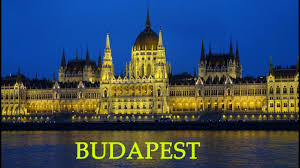Hungary is located in Central Europe, the heart of Europe, more precisely in the Carpathian Basin. The country has no access to the sea.
Hungary map
Hungary has a territory of 93,030 km² and is slightly larger than the state of Santa Catarina, in Brazil.

Neighboring countries of Hungary
Hungary is bordered by:
- Slovakia;
- Romania;
- Serbia;
- Croatia;
- Slovenia;
- Austria;
- Ukraine.
Capital of Hungary
The Hungarian capital is Budapest. The city, crossed by the Danube River, is the most populous in Hungary and the main financial, corporate, commercial and cultural center in the country. So it attracts many tourists.
Budapest is among the cheapest cities to live in the European Union .

Hungarian language
The population of Hungary is made up of: Hungarians (89%), Roma (4%), Germans (3%), Serbs (3%) and others (1%). The official language is Hungarian. However, due to the other peoples present in the region, the following languages are also spoken: German, Slovak, Ukrainian, Slovenian, Serbian, Croatian and Hebrew.
English is spoken by some people, mainly in tourist spots.
Hungary flag

The flag is rectangular and consists of three horizontal stripes, of the same size, in the colors red (upper), white (middle) and green (lower). The flag of the French Revolution was the inspiration for the tricolor format with horizontal stripes.
Red stands for strength, white stands for fidelity and green stands for hope.
Brief history: All about Hungary
Hungary emerged after the First World War, through the dismemberment of the Austro-Hungarian Empire. During the Second World War, the country supported defeated Nazi Germany.
The country adopted communism and had the support of the Union of Soviet Socialist Republics (USSR). And, only in 1990, the country made the transition to the free market. It is one of the first ex-communist nations to enter the European Union (EU) – it joined in 2004.
economy
The Hungarian economy is growing . Before, it was based on agriculture and the consumer goods industry, but it started to become diversified with capitalism, starting in the 1990s.
The free market opened more doors for tourism, with a very relevant role in the economy. Currently, the private sector accounts for 80% of the country’s GDP.
According to the United Nations (UN), Hungary has a very high Human Development Index (HDI) . The nation provides excellent basic sanitation, health and education services. Per capita income is $ 28,900, year 2016.
Top Cities
In addition to Budapest, which stands out for its cultural tourism, other cities also have points worth visiting, such as: Eger, with several famous sights and monuments; Miskolc, with its historic center and spas, and Pécs, with intense cultural activity.
We talk about these, but the cities of Kecskemét, Békéscsaba, Szeged and Debrecen are also worth mentioning.
Hungary sights
Budapest
One of the main tourist spots in the country is, without a doubt, Budapest, a fantastic city, with monuments, palaces, as well as several cultural events. Lake Balaton, called the “Hungarian Sea”, is also a very attractive region. The thermal seasons are very popular in the summer.
Medieval Cities and Castles
There are also several medieval baroque cities, such as Sopron, Pécs, Gy? Re Eger. Fairytale castles catch our attention.
Flat land
The Hungarian plain, made up of rustic villages, such as those in the Mez? Kövesd region, or UNESCO World Heritage sites, such as the village of Hollók ?, are also worth your visit. Not to mention the country’s caves and natural landscapes …
Curiosities about Hungary
We talked about Hungary in a nutshell, of course. Now, let’s show the curiosities of this country. As there are many, we have selected some for you!
Know something about Hungary
- Budapest is the junction of two cities on the banks of the Danube: Buda, located on the right bank, and Pest, on the left bank.
- The Budapest metro line 1, opened in 1896, is the second oldest in continental Europe. The first is London.
- In Hungary, the surname is written first and then the person’s name.
- Hungarians, when greeting each other, first kiss the left side of the person’s face and then the right side, contrary to what residents of other countries do.
- In Budapest is the Great Synagogue on Dohany Street, the largest and most monumental synagogue in Europe. It has an interior capacity for more than 3,000 people.
